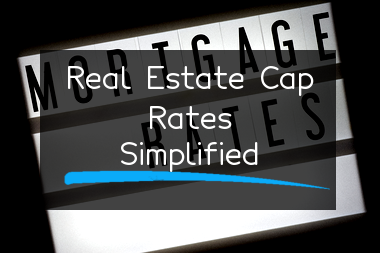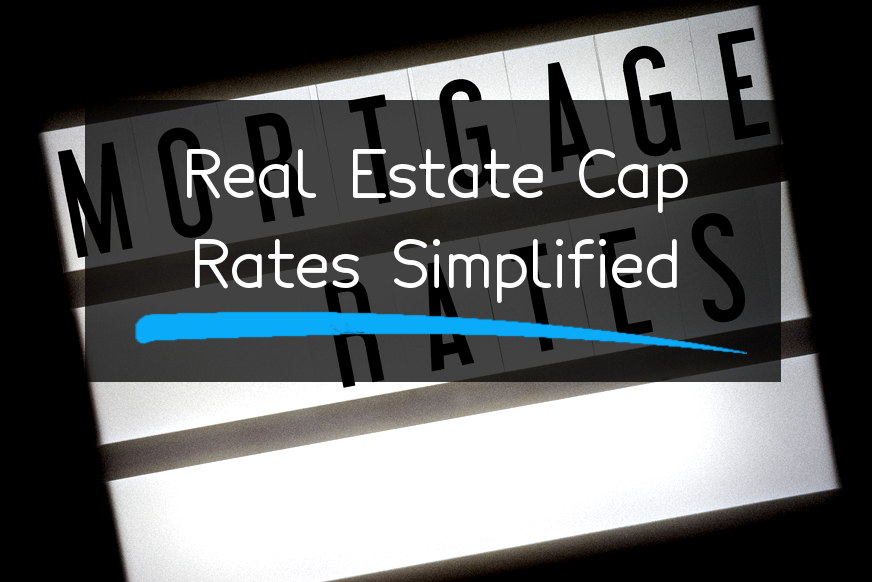Cap rates, short for capitalization rates, are one of the most widely used metrics in real estate investing to evaluate the profitability of a property. These are used to evaluate the potential of a property investment and reflects the expected return on investment for a particular property. A propertys cap rate is the percentage of the net operating income (NOI) it generates to its current market value or purchase price.
The formula for calculating the cap rate is as follows:
Cap rate = Net Operating Income (NOI) / Property Value
The net operating income is the total income generated by the property from rental income minus various expenses such as property management, maintenance, taxes, insurance, and utilities. It represents the total cash flow that the property is generating.
The higher the cap rate, the better the return on investment it indicates. For instance, a property with a cap rate of 8% means that the property is expected to generate 8% of its market value in yearly income. It indicates that the property is generating a good amount of income relative to the amount invested.
Cap rates are generally used to compare different investment opportunities in the same market. Investors use cap rates to determine whether a property is a good investment, and if it will generate positive returns for the rental owner. They also enable property owners to set rental prices to meet financial goals effectively.
In summary, cap rates are one of the most commonly used metrics to evaluate real estate investments. The higher the cap rate, the better the return on investment for a given property, making it an important consideration while investing in real estate.
What Are Cap Rates in Real Estate?
Cap rate, short for capitalization rate, is a financial metric used in real estate investing to estimate the return on investment (ROI) of a property by determining the ratio of net operating income (NOI) to its market value. In simpler terms, cap rate measures the property's profitability by comparing how much income it generates to the property's purchase price or market value.
Cap rates vary by location, property type, and market conditions. Generally speaking, the higher the cap rate, the riskier the investment, as it indicates a higher return on investment with fewer guarantees. Conversely, a lower cap rate means investors can expect less risk but lower returns.
Cap rates can be used as a tool for comparing different properties or even entire markets to determine which investments are more profitable. In addition, cap rates are helpful in evaluating potential acquisitions or dispositions, as they provide a starting point for estimating a property's future cash flow and overall value. Overall, cap rates are an essential tool for any real estate investor looking to gauge the profitability and potential return on investment for a given property or market.
How Are Cap Rates in Real Estate Useful?
Cap rates, or capitalization rates, in real estate are useful in several ways:
- 1Evaluating investment opportunities: Cap rates provide a way to compare the return on investment for different properties. The higher the cap rate, the higher the potential return on investment.
- 2Determining property value: Cap rates are used to calculate the value of a property. By dividing the propertys net operating income (NOI) by the cap rate, the estimated value of the property can be determined.
- 3Assessing risk: Cap rates can be used to gauge the level of risk associated with an investment property. Properties with higher cap rates may have higher risk due to factors such as location or condition of the property.
- 4Making informed decisions: By using cap rates to evaluate investment opportunities, investors can make informed decisions about whether a property is worth the investment. The cap rate provides a clear picture of the potential return on investment, helping investors to make an informed decision about whether to proceed with a purchase.
Overall, cap rates are a useful tool for anyone involved in real estate investing or valuation, providing a clear and objective way to evaluate investment opportunities and make informed decisions.
What Are Cap Rates? Limitations?
Cap rates have limitations because they do not take into account factors such as operational costs, tenant turnover, future market changes, or changes in interest rates. Cap rates also do not account for differences in capital structures, financing terms, or the risk associated with a particular investment. Additionally, cap rates can vary based on the perceived risk associated with a particular property or asset class, which can make it difficult to compare cap rates across different types of properties. Finally, cap rates are a snapshot in time and can be influenced by short-term market conditions, which may not accurately reflect the long-term value of an investment.
Using Cap Rates to Calculate Value
Capitalization (cap) rates are used to calculate the value of a property. Cap rates represent the rate of return an investor expects to earn from a property. The cap rate for a property is calculated by dividing the net operating income (NOI) by the property's value.
The formula for calculating a property's value using a cap rate is:
Value = NOI / Cap Rate
To put this into practice, assume a property generates an NOI of $100,000 and the prevailing cap rate in the market is 7%. The property's value can be calculated as:
Value = $100,000 / 0.07
Value = $1,428,571
This means that the property is worth $1,428,571 based on its current NOI and the cap rate in the market. If the cap rate were to decrease to 6%, the property's value would increase to $1,666,667. Conversely, if the cap rate were to increase to 8%, the property's value would decrease to $1,250,000.
Using cap rates to calculate value is a common practice in commercial real estate. It allows investors and analysts to compare the value of different properties in a market and make informed investment decisions. However, it's important to note that cap rates are not a perfect metric and should be used in conjunction with other valuation methods.
What' a Good Cap Rate on a Rental Property?
Cap rate, or capitalization rate, is a measure of the potential return on investment for a rental property. It is calculated by dividing the net operating income (rental income minus operating expenses) by the property's market value. The resulting percentage represents the potential return on investment.
A good cap rate is generally considered to be between 8 and 12 percent. However, the ideal rate can vary depending on the location, market conditions, type of property, and the investor's individual goals and risk tolerance.
A cap rate below 8 percent may indicate that the property is overpriced or that expenses are too high relative to rental income. A cap rate above 12 percent may indicate a higher risk property or an opportunity to increase the rental income.
Ultimately, a good cap rate is one that aligns with an investor's financial objectives and provides a solid return on investment.
Just one more thing: if you liked the article, please like us on social media and share this article with friends.



